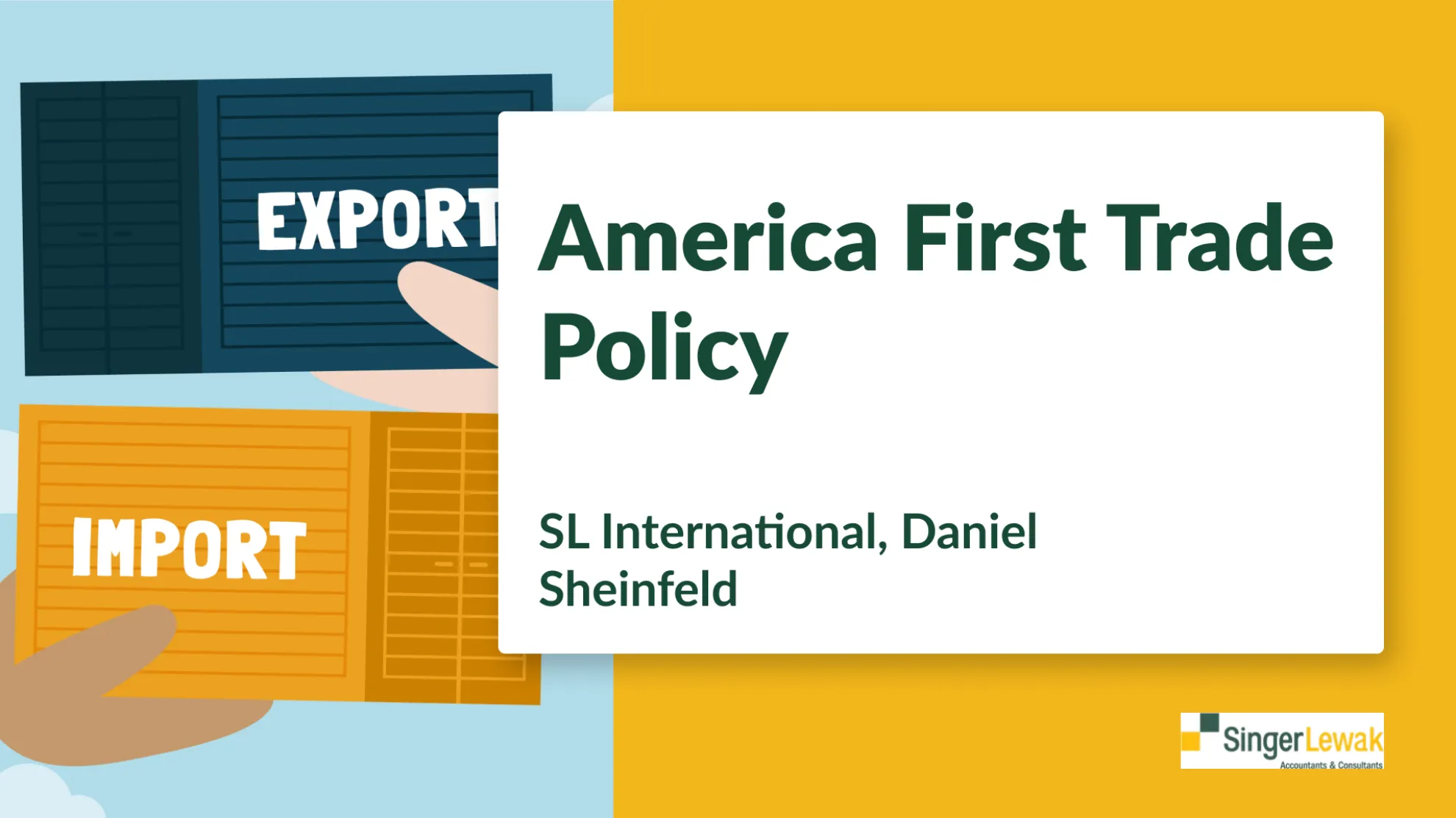“AMERICA FIRST” TRADE POLICY
Executive Summary
Since his return to the Oval Office, President Trump has implemented a series of customs, tariffs, and trade policies aimed at protecting American industries and addressing international trade imbalances. President Trump is claiming his authority under the International Emergency Economic Powers Act of 1977 (“IEEPA”) to address the situation posed by large and persistent trade deficits in our trade relationships, and other policies like currency manipulation and value-added taxes (“VAT”) imposed by other countries. Below are highlights of recent U.S. and foreign trade policy decisions, as well as a strategic action plan for businesses to consider while navigating this changing environment.
U.S. Trade Policy Decisions
· Auto Tariff Exemptions and Tariff Stacking
On April 29, 2025, President Trump signed Executive Order 14289, preventing certain tariffs from stacking. Products subject to auto tariffs are exempt from overlapping tariffs under other programs (e.g., steel/aluminum or country-specific tariffs). This clarification simplifies tariff stacking concerns for automotive clients but requires careful classification and documentation.
· Steel and Aluminum Tariffs Increased
Effective June 4, 2025, under Section 232 of the Trade Expansion Act of 1962, tariffs on steel and aluminum imports were raised to 50% for all countries except the UK, which remains at 25%. As of June 23, eight additional product lines were included as part of steel derivative related tariffs impacting products such as refrigerators, dryers, and washing machines.
· Sanctions-Linked Tariffs
A 100% tariff may be imposed on countries continuing trade with Russia if a peace deal regarding Ukraine is not reached. This measure is intended to pressure third-party nations and could disrupt global trade flows. On August 6, President Trump doubled the reciprocal tariff rate on India to 50% as a penalty for their purchases of Russian oil. Other third-party nations expected to be most impacted by these potential sanction-linked tariffs include China, Brazil, and Turkey.
· EU and Mexico: Reciprocal Tariffs
Effective August 1, 2025, President Trump announced a general 15% tariff on most EU goods (some EU goods remain subject to higher tariff rates, notably steel and aluminum) and a 25% tariff on Mexican goods not compliant with the United States-Mexico-Canada Agreement (“USMCA”). Mexican goods compliant with the USMCA are indefinitely exempted from tariffs. Clients with transatlantic or North American operations should prepare for increased costs and potential retaliatory measures.
· China: Tariff Reduction Expiration
The 90-day bilateral tariff reduction pause between the U.S. and China was extended and is now set to expire on November 10, 2025. Without renewal or further modifications, tariffs on most Chinese goods is expected to rise to 145%, impacting the electronics, machinery, and consumer goods sectors.
· Japan and South Korea: Trade Deal
After negotiations with the U.S., both Japan and South Korea now face a tariff rate of 15%.
· Brazil: Tariffs Related to Internal Brazilian Politics
Brazil currently faces a tariff rate of 50% in part due to disagreements with the U.S. regarding domestic Brazilian political matters. However, the impact of the tariff rate is reduced by the large number of exceptions on industries key to the Brazilian economy including select agricultural products, industrial inputs, and natural resources.
Tariff Information by Country
Below is a table highlighting the U.S. tariff rate as well as retaliatory tariffs for key countries.
| Country | United States Imposed Tariff | Retaliatory Tariffs |
| Brazil | 50% base rate (however numerous agricultural products, industrial inputs, and natural resources are included on a list of exempted Harmonized Tariff Schedule of the United States (HTSUS codes)) | N/A |
| Canada | 35% base rate (however under the terms of the USMCA, the majority of Canadian exports enter the U.S. tariff free) | 25% base rate on non-USMCA compliant goods |
| China | 30% (however, scheduled to increase to 145% on November 10, 2025 once the 90 day bilateral tariff reduction pause expires) | 10% |
| European Union | 15% | N/A |
| India | 50% | N/A |
| Japan | 15% | N/A |
| Mexico | 25% base rate (however under the terms of the USMCA, the majority of Mexican exports enter the U.S. tariff free) | The majority of imports from the United States enter Mexico tariff free under the terms of the USMCA. However, Mexico has imposed various tariff rates on United States goods not covered by the terms of the USMCA. |
| South Korea | 15% | N/A |
Summary
The landscape for tariffs, customs, and global trade is rapidly evolving. Regulations, tariffs, and other trade barriers are quickly being imposed, paused, or in some cases removed based on negotiations, political considerations, and market reactions. The SingerLewak team is equipped to assist you in these uncharted territories. We look forward to partnering with you to navigate the complexities of the current trade environment. Feel free to contact us with any questions.
- Robin Park | [email protected]
- Stephen Bolt | [email protected]
- Daniel Sheinfeld | [email protected]



